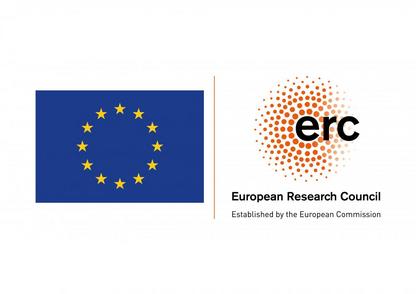
COREX: from correlations to explanations
Short description
The study of the past is undergoing a dramatic transformation: researchers in the fields of archaeology, genetics, linguistics, history and archaeometry are blurring the lines delimiting their respective fields, and working in increasingly collaborative efforts to understand how history and prehistory unfolded.
Recent debates stress the need for new explanatory models which integrate both micro- and macro-level historical processes, and diverse types of datasets.
We approach this challenge by applying novel modelling approaches allowing us to move from correlations to explanations of how changes have been shaped by the dynamic interaction of cultural innovation, migration, admixture, population growth and collapse, landscape transformation, dietary change, biological adaptation, social structure, and the emergence of new diseases.
Which came first: Climate changes or social and economic changes? How did cultural and genetic changes influence each other? And what caused people to migrate?
“These are some of the big questions that the project will answer,” says Kristian Kristiansen, Professor in Archaeology at the University of Gothenburg, one of the COREX projects Principal Investigators (PI).
By combining novel modelling approaches with archaeology and large quantities of data and analyses – including everything from prehistoric genetic material (aDNA) to climate data – the research team aims to discover and explain the key processes behind the genetic and cultural diversity in Europe. The researchers will investigate the period from the first farmers around 6,000 years BCE, to the end of the Bronze Age around 500 years BCE.
The project has been awarded an ERC Synergy Grant by the European Research Council (ERC).

The study of the past is undergoing a dramatic transformation: researchers in the fields of archaeology, genetics, linguistics, history and archaeometry are blurring the lines delimiting their respective fields, and working in increasingly collaborative efforts to understand how history and prehistory unfolded. Recent debates stress the need for new explanatory models which integrate both micro- and macro-level historical processes, and diverse types of datasets.
We approach this challenge by applying novel modelling approaches allowing us to move from correlations to explanations of how changes have been shaped by the dynamic interaction of cultural innovation, migration, admixture, population growth and collapse, landscape transformation, dietary change, biological adaptation, social structure, and the emergence of new diseases.
To achieve this overall goal the project is built upon four specific aims, which translates into four work packages:
-
WP1: Database for C14, cultural and subsistence (including isotope) data, ancient genomes, eDNA sites, fossil pollen datasets and strontium samples
-
WP2: Environmental DNA and high- resolution local environments,
-
WP3 Exploratory analyses and discriminative models,
-
WP4 Generative models and explanations.
Our findings will serve to determine what the impact of the movement of people was on the European landscape, simultaneously on multiple scales: continental, regional and local, providing a research program defying the boundaries of archaeology, genetics and mathematical modelling.
Thus, by identifying prehistoric regularities in the interactions of human biology, social and economic organisation, and demography we will be able to compare them to anthropological and historical models of such processes in recent times, to form a more comprehensive understanding of the nature of migration, integration and cultural change, then and now.

BIAD is a constantly growing decentralized relational archaeological database. Its geographic scope is currently predominantly Europe; however, it continues to expand beyond this, and will become global. The database is designed to be able to integrate all types of archaeological data within a single unified structure, including strontium isotope analyses, archaeobotanical and zooarchaeological data, contextual information, mortuary data, mappings to associated ancient DNA.
One of the major goals is the BIAD to become independent and serve as an open access source for future research, by providing three tiers of access and privacy. Data can initially be stored in a private tier, ensuring it is only accessible to a specific project. A shared tier gives users reciprocated access to other projects’ shared data, with associated co-authorship if used in a publication. Finally, data matures to become public access, after a substantial embargo period. This will be the first of its kind in archaeology. BIAD is already extending beyond COREX, with new data being provided by several independent projects. The BIADwiki website provides a front-end user guide for all aspects of using BIAD.


